
St. Ansgar is a city in Mitchell County, Iowa, United States. The population was 1,160 at the 2020 census.
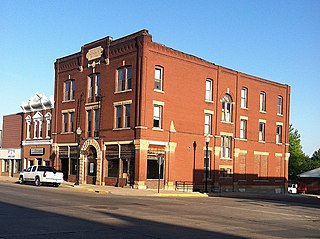
Sleepy Eye is a small city in rural Brown County, Minnesota, United States. The city is named after a famed local Dakota chief from the 1800s. The population was 3,599 at the 2010 census.

Inver Grove Heights is a city in Dakota County, Minnesota, United States. The population was 35,801 at the 2020 census. The city was formed on March 9, 1965, with the merger of the village of Inver Grove and Inver Grove Township.

South St. Paul is a city in Dakota County, Minnesota, United States, immediately south and southeast of St. Paul and east of West St. Paul. The population was 20,759 at the 2020 census. The town was a major meat-packing location, and many residents are descended from immigrants of Southern European and Eastern European heritage, who came to work in the meat-packing plants in the early twentieth century.

Cannon Falls is a city in Goodhue County, Minnesota, United States. The population was 4,083 at the 2010 census. Located along U.S. Route 52, southeast of the Twin Cities, Cannon Falls is the home of Pachyderm Studio, where many famous musicians have recorded, including Nirvana, which recorded its 1993 album In Utero there.

Zumbrota is a city in Goodhue County, Minnesota, United States, along the North Fork of the Zumbro River. The population was 3,252 at the 2010 census. It promotes itself as "the only Zumbrota in the world."

Tyler is a city in Lincoln County, Minnesota, United States. The population of Tyler was 1,143 at the 2010 census.

Fairmont is a city and the county seat of Martin County, Minnesota, United States. The population was 10,487 at the 2020 census.

Fulda is a city in Murray County, Minnesota, United States. The population was 1,371 at the 2020 census, up from 1,318 in 2010.
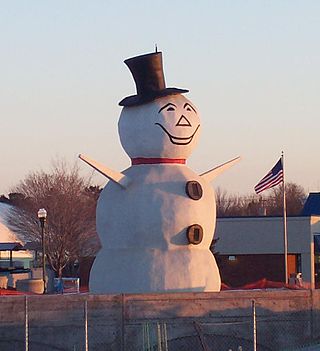
North Saint Paul is a city in Ramsey County, Minnesota, United States, located east-northeast of the city of Saint Paul. The population was 12,364 at the 2020 census.

Roseville is a city in Ramsey County, Minnesota, United States. It is one of two Twin Cities suburbs that are adjacent to both Saint Paul and Minneapolis. Roseville comprises Falcon Heights, Lauderdale, and southern Roseville. The latter was unincorporated until Roseville incorporated in 1948, and Falcon Heights and Lauderdale incorporated in 1949. The population was 36,254 at the 2020 census.
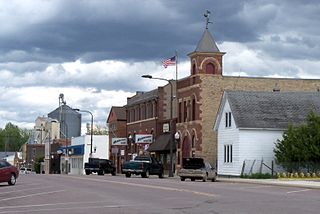
Arlington is a city in Sibley County, Minnesota, United States. The population was 2,233 at the 2010 census.

Scandia is a city in Washington County, Minnesota, United States. The population was 3,984 at the 2020 census. Scandia is 25 miles northeast of Saint Paul, Minnesota.

Stillwater is a city in the U.S. state of Minnesota and the county seat of Washington County. It is in the Minneapolis–Saint Paul metropolitan area, on the west bank of the St. Croix River, across from Houlton, Wisconsin. Stillwater's population was 19,394 at the 2020 census. Stillwater is often called "the birthplace of Minnesota" due to its role in the establishment of the state.

Lewiston is a city in Winona County, Minnesota, United States. The population was 1,620 at the 2010 census.

Ellendale is a city in Dickey County, North Dakota, United States. It is the capital city of Dickey County. The population was 1,125 at the 2020 census. Ellendale was founded in 1882. Ellendale is the home of Trinity Bible College, located on the former campus of the North Dakota State Normal and Industrial School and the Ellendale Opera House currently under renovation.

Burlington is a city in Ward County, North Dakota, United States. It was founded in 1883, the third in a series that included two earlier settlements. Despite this, Burlington is still the oldest city in Ward County, as well as north-western and north central North Dakota. On February 28, 1884, as it was the only city in the then-newly formed Imperial Ward County, it was made the county seat, a position it held until 1888. The population was 1,291 at the 2020 census. Burlington is part of the Minot Micropolitan Statistical Area.
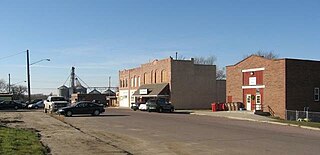
Baltic is a city on the Big Sioux River in northern Minnehaha County, South Dakota, United States. The population was 1,246 at the 2020 census.
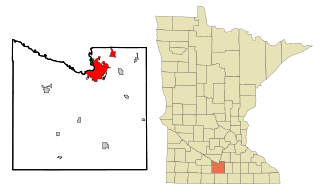
Mankato is a city in Blue Earth, Nicollet, and Le Sueur counties in the U.S. state of Minnesota. It is the county seat of Blue Earth County, Minnesota. The population was 44,488 according to the 2020 census, making it the 21st-largest city in Minnesota, and the 5th-largest outside of the Minneapolis–Saint Paul metropolitan area. It is along a large bend of the Minnesota River at its confluence with the Blue Earth River. Mankato is across the Minnesota River from North Mankato. Mankato and North Mankato have a combined population of 58,763 according to the 2020 census. It completely encompasses the town of Skyline. North of Mankato Regional Airport, a tiny non-contiguous part of the city lies within Le Sueur County. Most of the city is in Blue Earth County.
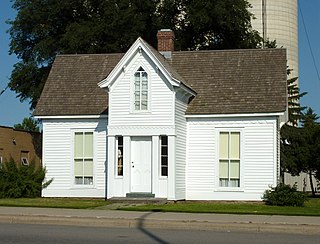
Le Sueur is a city in Le Sueur County in the U.S. state of Minnesota, between Mankato and the Twin Cities. It lies along the Minnesota River and U.S. Highway 169. Le Sueur was named in honor of the French explorer Pierre-Charles Le Sueur. The population was 4,213 at the 2020 census.






















